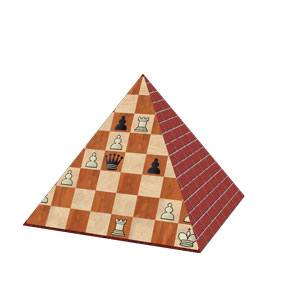Total Chess: Opening Systems

In the opening, many different moves are possible. You cannot memorize them all, but you can learn the opening systems you would like to play. An opening system is a specific type or style of opening, and the ideas and the strategies that go with it.
Each opening system has its own typical moves and typical positions. Once you learn and understand an opening system, you will be able to play it much better.
All opening systems follow the three basic opening strategies: develop your pieces, control the center, and castle your king. However, they may use different methods to accomplish these goals. Opening systems fall into three main categories.
1) King pawn: King pawn openings generally favor aggressive, attacking players. Many king pawn openings result in open or semi-open pawn structures, which lead to fast pace games and lots of tactics. Be prepared for tactical battles and mating attacks when you play these openings.
2) Queen Pawn: Queen pawn openings generally favor more passive, defensive players. Many queen pawn openings result in closed or semi-closed pawn structures, which lead to slow pace games and positional play. Be prepared for positional struggles and piece maneuvering when you play these openings.
3) Other: Other openings generally favor unconventional, creative, innovative players. These openings are for those who want to play something their opponent probably does not know. They want to take the game out of the book so they can use their own creativity. Be prepared to think carefully and try to transition into an opening system and pawn structure that you know and with which you are comfortable.
The majority of chess games begin with the king pawn (1 e4) or the queen pawn (1 d4). These are the best first moves. Other first moves are also played, but not as often. In the king pawn and queen pawn openings, white tries to establish control of the center with a pawn, and then take the lead in development.
Black can respond by advancing the same pawn, leading to symmetrical openings, or he can make a different move, leading to non-symmetrical openings. In symmetrical openings, black aims for equality by matching white’s pawn center and keeping a balance between his moves and white’s moves. In non-symmetrical openings, black aims for an advantage by setting up differences in the pawn center, and then tries to exploit these differences or imbalances. He may or may not be successful.
An opening is traditionally named for the player who made it popular, or for the location where it was first played. However, openings with player names are slowly being changed to location names.
When reviewing opening systems, it helps to know some of the terms used in the names. The three major divisions are main lines, variations, and gambits. Main lines are the most common moves in an opening, variations are alternative moves, and gambits are sacrifices for fast development or space. This gives you a general idea about how each opening is played.
1) Opening Main Lines – most common moves
1. Orthodox: Play occurs traditionally with old, well-known moves.
2. Classical: Play occurs naturally with obvious, logical moves.
3. Modern: Play occurs differently with new, innovative moves.
2) Opening Variations – alternative moves
1. Exchange: Pawns or pieces are traded to open the position.
2. Advance: Pawns are advanced to close or block the position.
3. Strong Point: Pawns are guarded to hold a strong pawn center.
3) Opening Gambits – sacrifices for development or space
1. Accepted: The gambit is taken and the player tries to keep it.
2. Declined: The gambit is not taken, the game proceeds without it.
3. Returned: The gambit is given back for space or development.
***
From the book, “TOTAL CHESS: Learn, Teach and Play the Easy 1-2-3 Way,” by John Herron
TOTAL CHESS is your complete guide to chess. It covers everything: rules, strategies, tactics and checkmates.
Everything in chess comes in threes. Three simple strategies are presented for the opening, midgame, endgame, etc. Each lesson is brief and covers one concept in simple language that everyone can read and understand.











Comments: